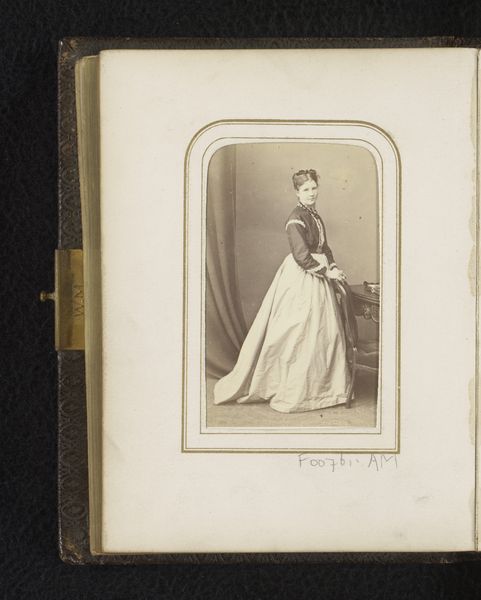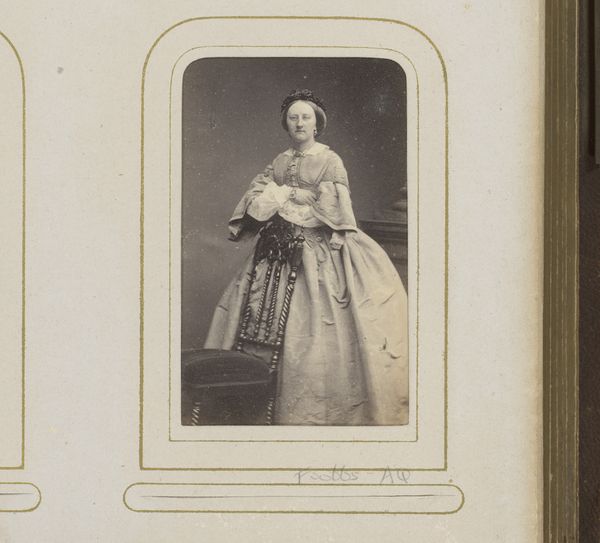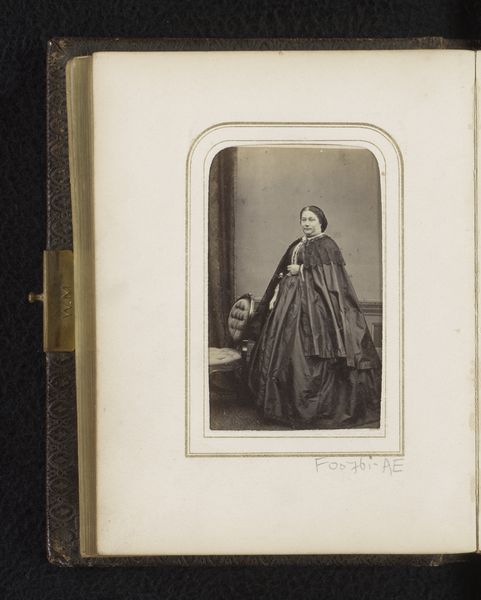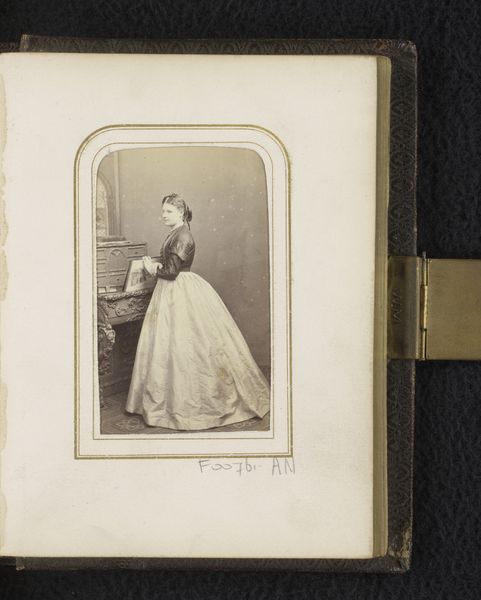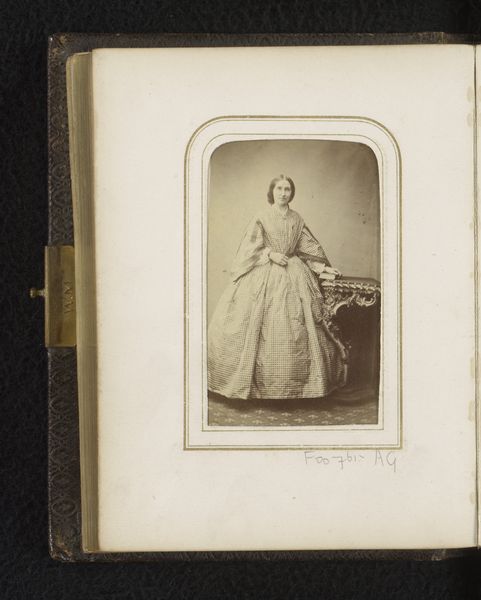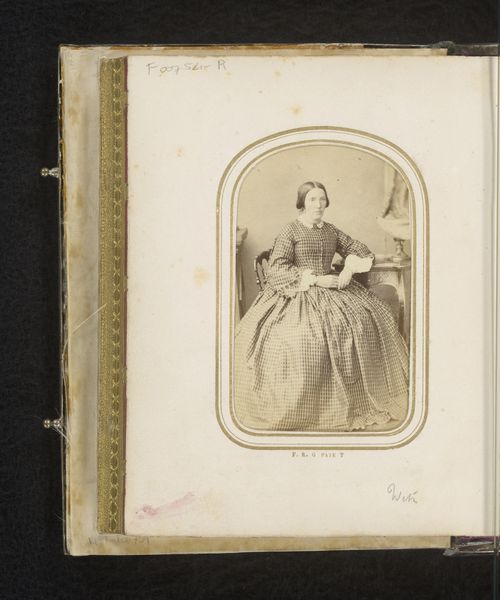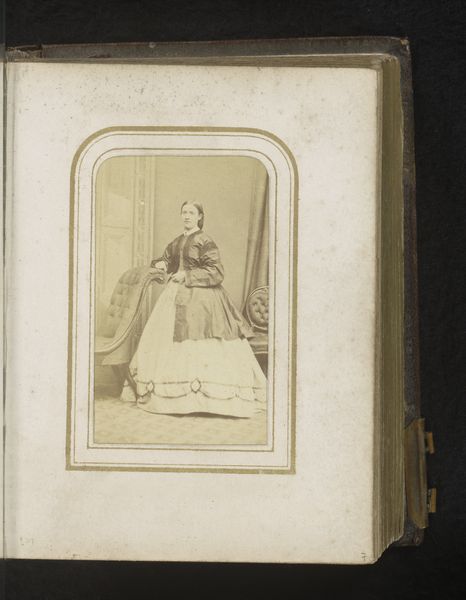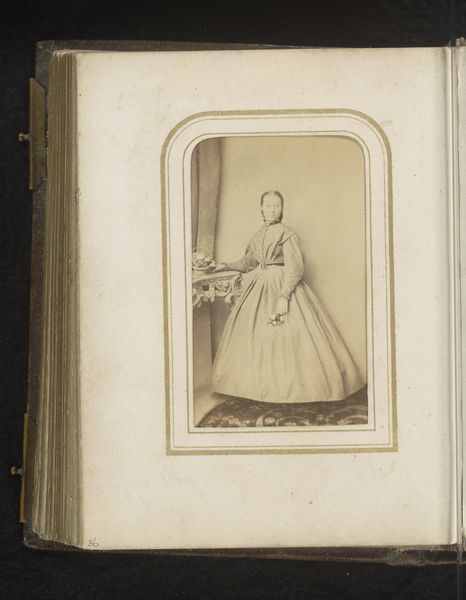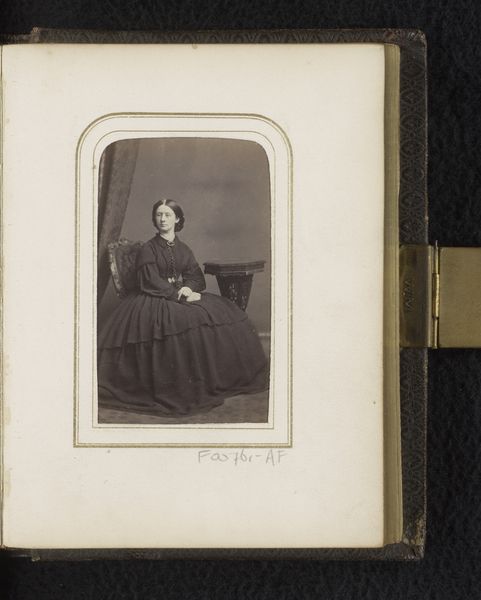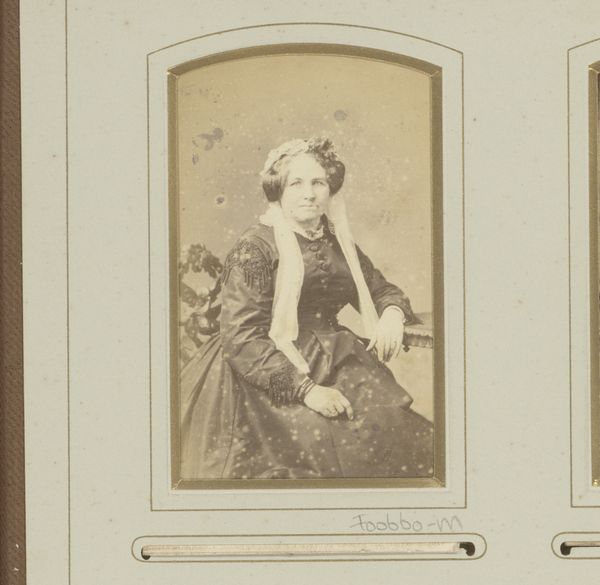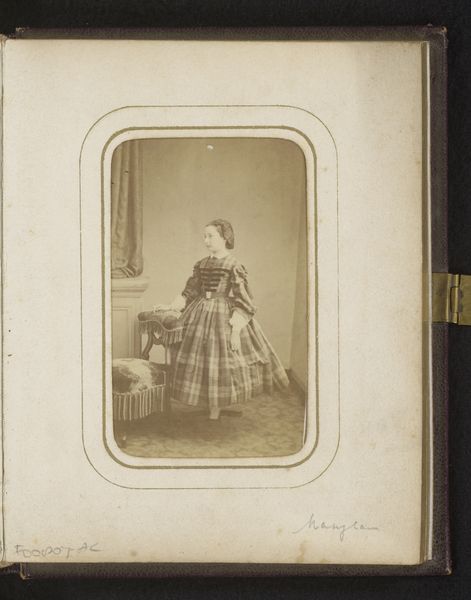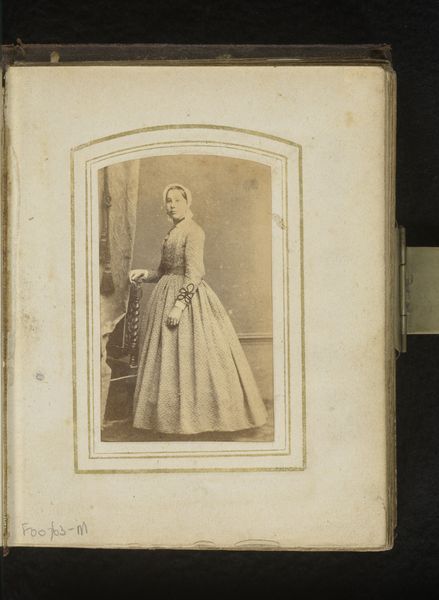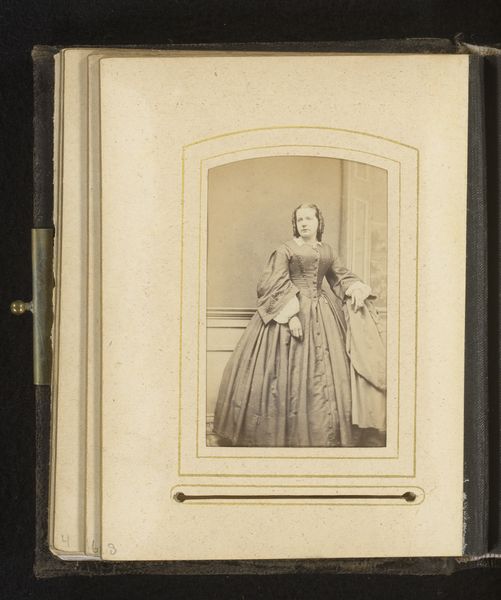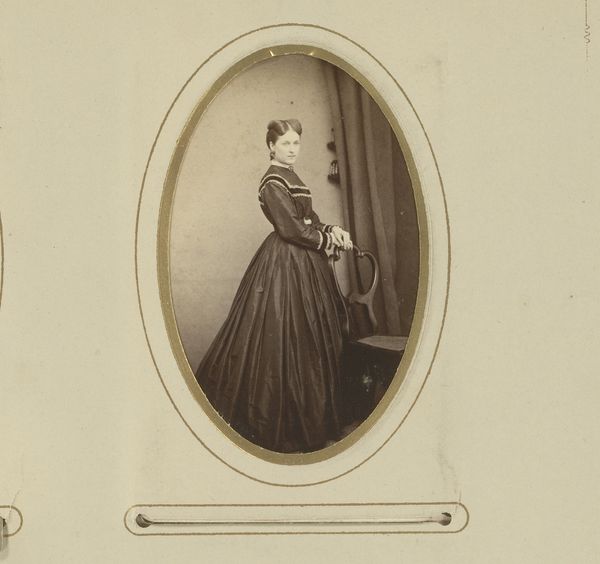
photography, gelatin-silver-print
#
portrait
#
aged paper
#
toned paper
#
muted colour palette
#
photography
#
historical fashion
#
gelatin-silver-print
#
realism
Dimensions: height 87 mm, width 51 mm
Copyright: Rijks Museum: Open Domain
Curator: Take a look at this remarkable piece from The London School of Photography, aptly titled "Portret van een staande vrouw," created sometime between 1854 and 1875. What are your initial thoughts? Editor: It strikes me as a rather subdued affair. The muted tones lend it a certain gravity. There's a compelling stillness to the subject's pose and gaze. The overall composition is very balanced. Curator: Indeed. This gelatin-silver print speaks volumes about the emerging culture of photography and portraiture during this period. Note how the creation of such a piece required access to certain levels of production—from the photographer and their studio, the material and chemical processes. Further, what status might one suggest for the sitter? Editor: She is a study in contrasts. Her simple attire versus the trappings of interiority that the bookcase gives us speaks volumes. This tells us how much a photographer thought about what to highlight when making such portraits. Curator: Precisely. It offers us a peek into the consumption habits, class structures, and labor that determined how individuals of the time perceived and constructed their identity. Also, we have to consider what the photographic process entailed at that moment and what it meant to sit in such environments. Editor: Semiotically, her attire, posture and the surrounding objects construct a narrative. Curator: Very much so. Considering both production and representation, it provides valuable insight. She’s not just standing; she is participating in the socio-economic display afforded through early photographic processes. Editor: I'm still taken by the aesthetic. The toning of the paper— that almost sepia-like quality —gives a melancholic character to the image. Also how sharp and crisp is the focus. The attention to lines and tonal values are to my eye pleasing. Curator: Ultimately, I find myself drawn to considering who had the luxury and wherewithal to access this form of memorialization and artistic engagement. The act of being photographed speaks to a certain privilege, which can provide social insight. Editor: For me, the photograph transcends its historical context, offering a silent commentary on the power of portraits to encapsulate a life in a fleeting instant.
Comments
No comments
Be the first to comment and join the conversation on the ultimate creative platform.
